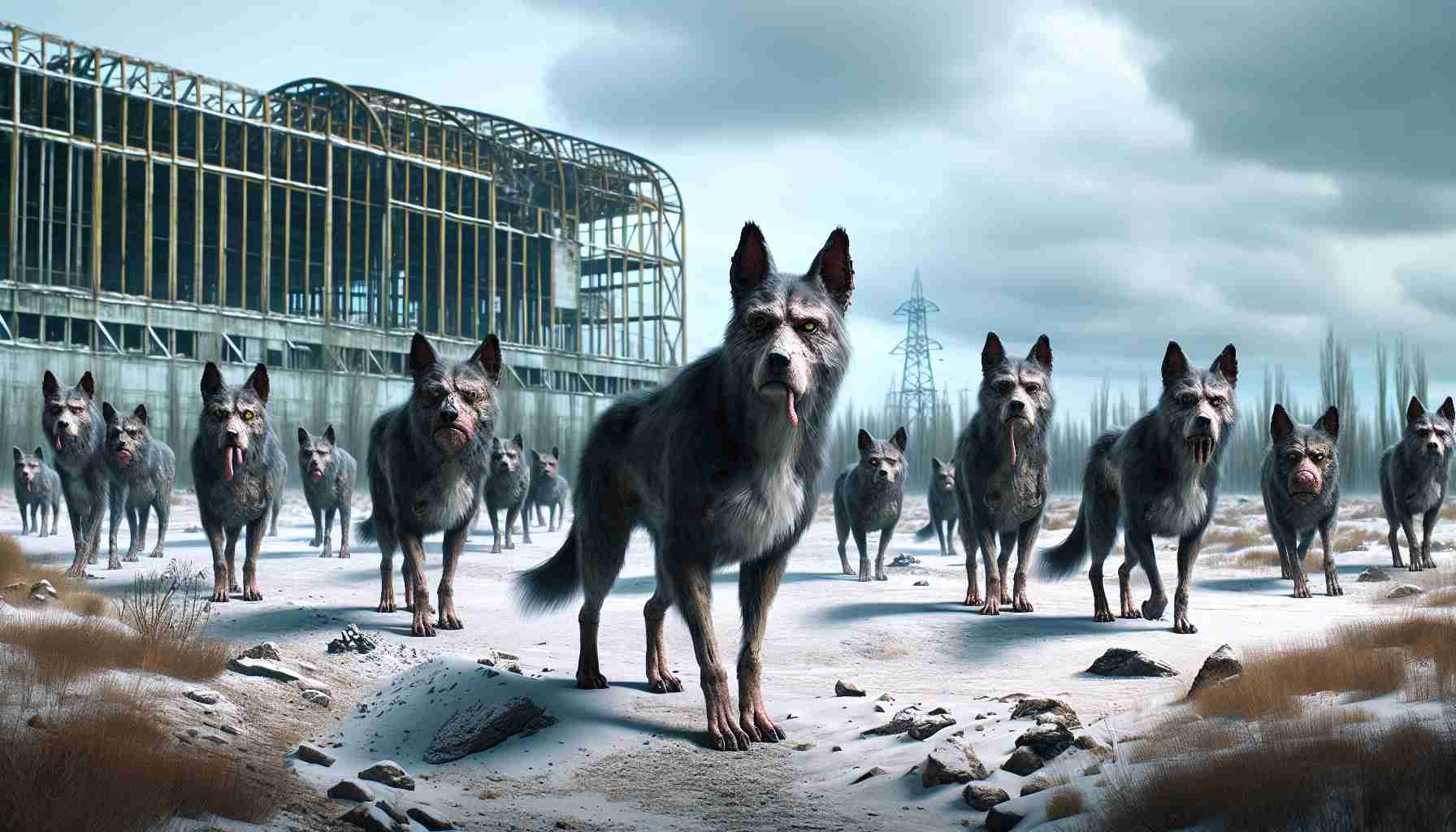- The Chernobyl Exclusion Zone, initially abandoned due to the nuclear disaster, now houses feral dogs that have adapted to the radioactive environment.
- These dogs, left behind by fleeing owners, show rapid genetic divergence from non-radiated relatives, indicating an accelerated evolutionary process.
- Scientists have identified unique genetic traits in over 300 of these canines, possibly enhancing survival in this harsh environment.
- Low-dose radiation exposure may be driving natural selection, leading to mutations such as reduced genetic diversity and altered pigmentation.
- The findings suggest radiation could paradoxically catalyze evolutionary processes, prompting new insights into adaptation and resilience in extreme conditions.
- Chernobyl, once seen as a symbol of disaster, may represent a unique site for studying rapid evolution and biological adaptability.
Beyond the eerie silence of Chernobyl’s desolate streets and ghostly landscapes, life pulses in unexpected forms. The notorious Exclusion Zone, a desolate relic of human hubris, now harbors a singular experiment of nature: feral dogs that have remarkably adapted to life in a radioactive wilderness.
These survivors, discarded by fleeing owners decades ago, are not just enduring—they’re evolving. A team of scientists recently probed the genome of over 300 of these strays and found signs of rapid genetic divergence from their non-radiated relatives. The harsh environment of Chernobyl appears to be a catalyst for accelerated evolution, raising questions about radiation’s role as a hidden driver of genetic adaptation.
Chernobyl’s feral canines aren’t just in a passive state of survival. Their DNA tells a tale of struggle and mutation. The dogs exhibit unique genetic traits, hinting at possible survival enhancements driven by prolonged exposure to low-dose radiation. Mutations abound—from reduced genetic diversity, possibly due to inbreeding, to shifts in pigmentation that echo the darker hues found among other local wildlife.
Radiation, often synonymous with danger, might paradoxically foster evolution by sifting through genetic decks and selecting viable adaptations. This natural selection on steroids could illuminate new paths in understanding how life might adjust to extreme conditions, opening dialogues on the resilience of life itself.
Chernobyl, once deemed a barren wasteland, now stands as a potential cradle for rapid evolution, expanding the boundaries of biological adaptability. As scientists continue to unravel this mystery, one can’t help but wonder if the dogs of Chernobyl aren’t merely lingering specters of a bygone disaster, but pioneers of a new genetic frontier.
From Ruin to Renaissance: Chernobyl’s Dogs Uncover Evolution’s Secret Weapon
## The Unseen Evolutionary Experiment of Chernobyl’s Feral Dogs
In the haunting aftermath of the Chernobyl disaster, life finds a way in one of the most unexpected places: the notorious Exclusion Zone. Here, amidst the forgotten ruins, feral dogs abandoned decades ago by fleeing owners form an ecosystem that defies the odds and pushes the boundaries of biological science and adaptation.
The Genetic Story of Chernobyl’s Canines
While the original article focused on the survival and evolution of these feral dogs within the Chernobyl Exclusion Zone, it barely scratched the surface of what this phenomenon implies both scientifically and ecologically. Studying the genetic divergence in these dogs offers insights into how organisms might adapt to extreme environmental pressures such as radiation. This adaptation could show accelerated evolutionary traits driven by the persistent, low-dose radiation exposure.
The comprehensive genome analysis of over 300 dogs reveals several fascinating results:
– Reduced Genetic Diversity: As expected in isolated populations, the Chernobyl dogs show signs of inbreeding, which initially might seem detrimental. Yet, this reduced diversity may streamline the emergence of beneficial mutations that promote survival under unique stressors like radiation.
– Pigmentation Shifts: These dogs exhibit darker coats, a trait seen in other wildlife within the zone, which may provide some protection from radiation or possibly aid in camouflage.
Radiation as an Evolutionary Catalyst
Radiation has been traditionally associated with negative biological impacts. However, the situation in Chernobyl presents radiation as an unforeseen catalyst for evolution. This challenges our understanding of its role in genetic adaptation, implying that under certain conditions, radiation might stimulate rapid evolutionary change. Researchers are exploring questions such as:
– How Does Radiation Affect Lifespan and Health? While some studies suggest decreased lifespan due to radiation, the long-term impact on subsequent generations and their health remains an open question that this population could help answer.
– Could This Lead to New Medical Insights? Understanding how low-dose radiation affects genetic adaptation might provide clues to improve radiation therapies or understand resistance to certain diseases in humans.
Global and Technological Implications
The implications of these findings are profound, extending beyond Chernobyl. They spark debates and research into how similar pressures might operate around other forms of environmental extremes (climate change, pollution, etc.) and foster genetic resilience.
# Global Considerations
– Conservation Efforts: Could this knowledge affect how we approach conservation strategies in environments altered by human activity or disasters?
– Climate Adaptation: By understanding life’s adaptability, could new strategies be developed to help species withstand changing climates or other environmental shifts?
# Technological Advancements
– Biotechnological Applications: Can this enhanced understanding of genetic adaptability inform biotechnological advancements, such as genetically resilient crops or organisms that can survive in harsh environments?
– Robust DNA Studies: Further research into the unique genetics of Chernobyl’s dogs might refine DNA repair and mutation regulation strategies, addressing genetic disorders.
Conclusion
Chernobyl’s feral dogs are not just survivors; they are a testament to life’s tenacity and adaptability. As ongoing studies continue to decode their genetic secrets, they might guide humanity toward a deeper understanding of evolution under extreme conditions and offer perspectives on resilience that could benefit the natural world and human development alike.
